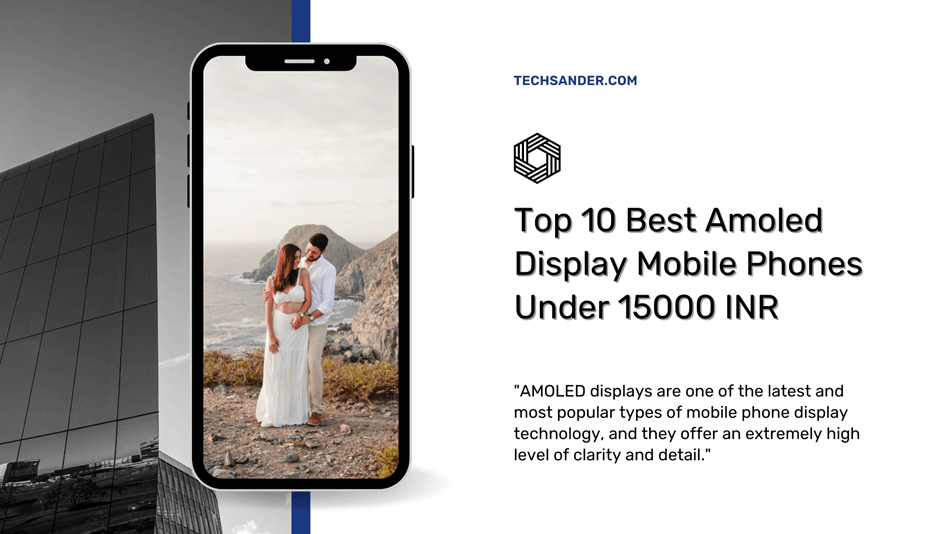Mobile devices have been getting more and more popular. Whether you’re a student, work, or just want to stay connected, a mobile device is the perfect way to do it. The current market for mobile phone display quality is becoming increasingly competitive as more and more companies are looking to offer a better experience for their customers. AMOLED displays are one of the latest and most popular types of mobile phone display technology, and they offer an extremely high level of clarity and detail. This makes them perfect for use on phones that need to be shown in very bright, large spaces, such as stadiums or airports. This article offers 10 of the best AMOLED display mobile phones under 15000 INR.
Table of Contents
Some of the Top 10 Best AMOLED Display Mobile Phones under 15000 INR are Listed Below:
1. POCO M4 Pro (Power Black, 6GB RAM 64GB Storage)
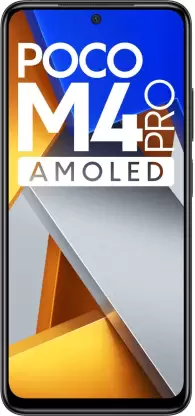
The Poco M4 has a 6.60-inch touchscreen display with a 90 Hz refresh rate that has a 20:9 aspect ratio and a resolution of 1080×2400 pixels. An octa-core MediaTek Dimensity 810 processor powers the Poco M4 Pro 5G. It has 4GB, 6GB, or 8GB of RAM available. A 5000mAh battery powers the Android 11 operating system of the Poco M4 Pro 5G. The Poco M4 Pro 5G has a dual camera configuration on the back, with a 50-megapixel (f/1.8) main camera and an 8-megapixel (f/2.2) camera. The arrangement for the back camera features autofocus. For selfies, it boasts a single front camera arrangement with a 16-megapixel sensor and an f/2.45 aperture.
The Poco M4 Pro 5G has 64GB or 128GB of internal storage that can be increased with a microSD card and runs MIUI 12.5, which is based on Android 11. (up to 1000GB). A dual-SIM (GSM and GSM) smartphone that takes Nano-SIM and Nano-SIM cards is the Poco M4 Pro 5G. The Poco M4 Pro 5G weighs 195.00 grams and has dimensions of 163.56 x 75.78 x 8.75mm. Cool Blue, Poco Yellow, and Power Black were the colours used for its introduction. Wi-Fi, GPS, Bluetooth v5.10, Infrared, USB Type-C, FM radio, 3G, 4G (with compatibility for Band 40 used by select LTE networks in India), and 5G are among the connectivity choices for the Poco M4 Pro 5G. The phone has a fingerprint sensor, proximity sensor, gyroscope, compass/magnetometer, accelerometer, and ambient light sensor.
Pros
- IP53 rated smartphone
- Excellent AMOLED display
- 90Hz refresh rate
- Long-lasting battery
Cons
- Overdesigned camera bump
- The MIUI 13 build is still based on Android 11, is missing some features
- No 4K or 1080p60 video recording
- No Night mode
2. iQOO Z6 44W (Raven Black, 4GB RAM, 128GB Storage)
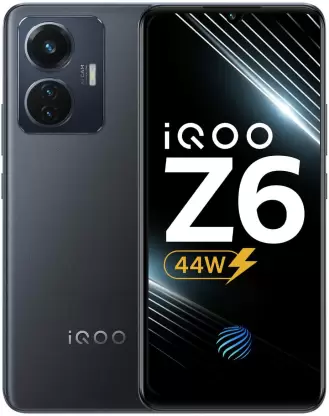
The phone has a 6.44-inch touchscreen display with a 60 Hz refresh rate that has a resolution of 1080×2400 pixels (FHD+) and a pixel density of 408 pixels per inch (ppi). An octa-core Qualcomm Snapdragon 680 CPU powers the iQOO Z6 4G. It has 4GB, 6GB, or 8GB of RAM available. The iQOO Z6 4G is powered by a 5000mAh battery and runs Android 12. The iQOO Z6 4G is compatible with specialised rapid charging. A 50-megapixel (f/1.8) main camera, a 2-megapixel (f/2.4) camera, and a 2-megapixel (f/2.4) camera are all part of the triple camera arrangement that the iQOO Z6 4G has on its back. The arrangement for the back camera features autofocus. For selfies, it includes a single front camera arrangement with a 16-megapixel sensor and an f/2.0 aperture.
The iQOO Z6 4G has 128GB of internal storage and runs Funtouch OS 12, which is based on Android 12. The dual-SIM (GSM and GSM) iQOO Z6 4G smartphone allows Nano-SIM and Nano-SIM cards. The iQOO Z6 4G weighs 182 grams and has dimensions of 160.80 x 73.79 x 8.42mm (height x width x thickness). It was introduced in the colours Lumina Blue and Raven Black. The iQOO Z6 4G has Wi-Fi 802.11 a/b/g/n/ac, GPS, Bluetooth v5.10, USB Type-C, 3G, and 4G connectivity choices (with support for Band 40 used by some LTE networks in India). The phone has an accelerometer, ambient light sensor, proximity sensor, compass/magnetometer, and in-display fingerprint sensor among other sensors.
Pros
- Huge battery capacity.
- Latest Android 12 OS support
- Schott Xensation glass protection
- Full HD AMOLED display
- Under-display fingerprint scanner
Cons
- No NFC or 5G support
- Average camera setup
- Default nits brightness and refresh rate
- Low octa-core processing speed
3. Redmi Note 11 (Space Black, 6GB RAM, 64GB Storage)
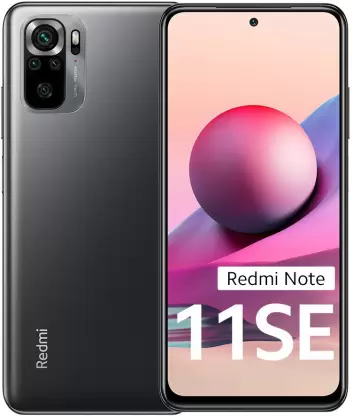
The Redmi Note 11 has a 6.43-inch touchscreen display with a refresh rate of 90 hertz (Hz), a resolution of 1080×2400 pixels, a pixel density of 409 pixels per inch (ppi), and a 20:9 aspect ratio. An octa-core Qualcomm Snapdragon 680 CPU powers the Redmi Note 11. It has 4GB and 6GB of RAM. A 5000mAh battery powers the Redmi Note 11 and the operating system is Android 11. The Redmi Note 11 has its own kind of quick charging. The Redmi Note 11’s rear cameras include of a quad camera arrangement with a 50 megapixel (f/1.8) main camera, an 8 megapixel (f/2.2), a 2 megapixel (f/2.4), and a 2 megapixel (f/2.4) secondary camera. The arrangement for the back camera features autofocus. For selfies, it boasts a single front camera arrangement with a 13-megapixel sensor and an f/2.4 aperture.
The 64GB, 128GB of built-in storage on the Redmi Note 11 may be upgraded through microSD card (up to 1000GB) with a dedicated slot and runs MIUI 13, which is based on Android 11. A dual-SIM (GSM and GSM) smartphone that takes Nano-SIM and Nano-SIM cards is the Redmi Note 11. The Redmi Note 11 weighs 179.00 grams and has dimensions of 159.87 x 73.87 x 8.09mm. Horizon Blue, Space Black, and Starburst White were the colours used during its launch. The Redmi Note 11 has Wi-Fi 802.11 a/b/g/n/ac, GPS, Bluetooth v5.0, Infrared, USB Type-C, 3G, and 4G connectivity options (with support for Band 40 used by some LTE networks in India). The phone has a fingerprint sensor, proximity sensor, gyroscope, compass/magnetometer, accelerometer, and ambient light sensor.
| PROS | CONS |
| 90Hz AMOLED Display | Average Cameras |
| Solid Battery Life | MIUI is not well-Optimized |
| Bright Display | Still, no Android 12 |
| Widevine L1 Support | No 5G Support |
| Carrier Aggregation Support | Pre-Installed Bloatware |
4. Samsung Galaxy M21 2021 Edition (Arctic Blue, 4GB RAM, 64GB Storage)
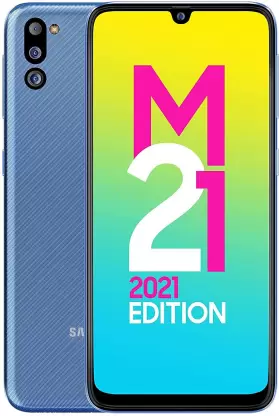
Samsung Galaxy M21 has a 6.40-inch touchscreen display with an aspect ratio of 19.5:9 and a resolution of 1080×2340 pixels. With a 6000mAh battery, the Samsung Galaxy M21 2021 Edition runs Android 11. In terms of cameras, the Samsung Galaxy M21 2021 Edition has a 48-megapixel camera on the back. The arrangement for the back camera features autofocus. It sports a single front camera arrangement with an unspecified sensor for selfies. One UI Core 3.1, which the Samsung Galaxy M21 2021 Edition uses, is based on Android 11. A dual-SIM (GSM and GSM) smartphone that takes Nano-SIM and Nano-SIM cards is the Samsung Galaxy M21 2021 Edition. It was introduced in the colours Charcoal Black and Arctic Blue.
Wi-Fi, GPS, USB Type-C, 3G, and 4G are among the Samsung Galaxy M21 2021 Edition’s connectivity choices (with support for Band 40 used by some LTE networks in India). The phone has a fingerprint sensor, proximity sensor, ambient light sensor, and accelerometer.
Pros:
- Immersive Display
- Classy Design
- Massive Battery
- Best Cameras
Cons:
- Outdated Processor
- Slow Fast Charger
5. Redmi Note 10T 5G (Mint Green, 4GB RAM, 64GB Storage)
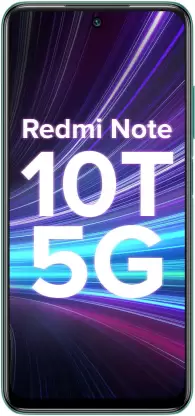
With a starting price of Rs 13,999, Xiaomi has introduced the Redmi Note 10T, the least expensive 5G model available in India to far. Astonishing connection and higher internet speed would be provided by this “fast and futuristic” 5G smartphone. In addition, the smartphone has a 6.5-inch AMOLED display with a resolution of 2400 x 1080 pixels, a 90Hz adaptive refresh rate, and a 20:9 aspect ratio. This feature provides an immersive viewing experience when playing games, filming videos, or watching movies.
The smartphone’s measurements are 161.81 mm x 75.35 mm x 8.92 mm, and it weighs around 190 grams. This makes it lightweight and provides a non-slip grip (height x width x thickness). Additionally, the recently released smartphone will be sold in Graphite Black, Chromium White, Mint Green, and Metallic Blue hues.
| Pros | Cons |
| MediaTek Dimensity 700 SoC | LCD Display |
| Five 5G bands | Ads in the UI |
| Solid Battery Life | Average Cameras |
| 90Hz Refresh Rate | Plastic Build |
| 5G Connectivity |
6. Redmi Note 10S (Frost White, 6GB RAM, 64GB Storage)
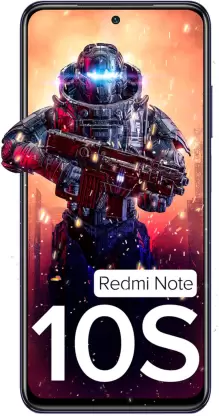
The Redmi Note 10S is an upgraded model of the Redmi Note 10, and both gadgets have the same design. Its 6.43-inch AMOLED screen is protected by Corning Gorilla Glass 3. Budget smartphones don’t often include stereo speakers or an IR transmitter, but the Redmi Note 10S has. The MediaTek Helio G95 processor, 6GB of RAM, and 64GB or 128GB of storage are all included in the Note 10S. Atop Android 11 is MIUI 12.5, which is running. It does come with a good number of pre-installed applications that sometimes send spammy alerts. A 33W charger and a 5,000mAh battery are included with the Note 10S.
The Redmi Note 10S from Xiaomi has a quad-camera configuration with a 64-megapixel main sensor. Average but over sharpened daylight images with blotchy distant objects. Macro and close-up photographs performed better. Low-light images were flat and blurry, while Night mode made minor improvements. The Redmi Note 10S is superior than the Redmi Note 10 solely in terms of performance.
Pros
- Lightweight, attractive design with IP53 rating
- Good display performance
- Good battery life and fast charging
- Stereo speakers and a headphone jack
Cons
- Regular 60Hz refresh rate
- Mediocre camera image quality
- 4K video lacks stabilization
- Overheats easily
7. Infinix Note 11 Smartphone (Glacier Green, 6GB RAM 128GB Storage) 17.02 cm (6.7 inch) Full HD+ AMOLED Display
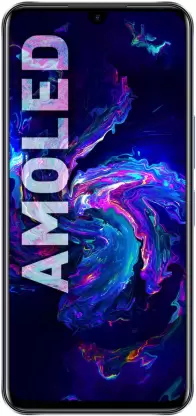
The Infinix Note 11 is made of mostly simple design and has a fairly straightforward appearance. A large 6.7-inch AMOLED screen with full-HD+ resolution is included. For protection, the front panel includes Gorilla Glass 3. The phone has a 30W charger in the package and a 5,000mAh battery. The Mediatek Helio G88 CPU, together with 4GB of RAM and 64GB of storage, power the Infinix Note 11. On top of Android 11 is XOS 10.
On the Note 11, you get a triple camera array with a 50-megapixel primary camera, a depth sensor, and a “AI sensor.” This phone sports a 16-megapixel selfie camera in the dewdrop notch, while the LED flash is discretely tucked away in the top bezel. Photos taken with the Note 11 had a little washed-out appearance and lacked fine detail. Close-ups and portraits performed better. The performance of the low-light camera was only ordinary and the output was noisy. Even though night mode showed improvements, the camera was still not up to par.
Pros
- Nice display
- Good battery life
- Clean design
Cons
- Not-so-great software experience
- Cameras need to be improved
8. MOTOROLA g31
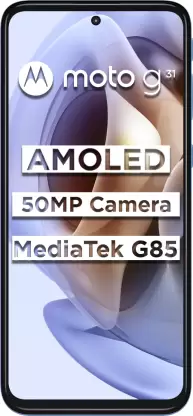
The Moto G31 makes an effort to live up to the high standards set by the Moto G30, but it falls just a little short. The MediaTek Helio G85 CPU, AMOLED screen, and IPX2 grade for dust and water resistance come standard on this Moto. Although it is built of polycarbonate and has a unibody design similar to the Moto G30, it does not feel cheap. The new AMOLED display is a significant upgrade over the G30’s LCD panel, although it only has a 60Hz screen refresh rate. Along with the typical Moto motions, Android 11 is available in a nearly vanilla form. For a cheap smartphone in this price range, performance is mediocre, and there are phones with comparable prices that have superior hardware. This phone has an excellent battery life and can run for 1.5 days between charges. The main camera operated well in daylight, but the ultra-wide one did not. Overall, low-light imaging was really poor.
Pros
- A FHD+ AMOLED display
- 50MP sensor
- Long lasting 5000mAh battery
Cons
- 60Hz refresh rate only
- The supporting sensors don’t do justice
9. Infinix Note 12

The device has a 6.70-inch touchscreen display with a 20:9 aspect ratio and a resolution of 1080×2400 pixels (FHD+). An octa-core MediaTek Helio G88 CPU drives the Infinix Note 12. It has 4GB and 6GB of RAM. A 5000mAh battery powers the Android 11 operating system of the Infinix Note 12. The Infinix Note 12 has its own kind of quick charging. A 50-megapixel main camera, a 2-megapixel secondary camera, and a QVGA camera are all included in the triple camera arrangement on the Infinix Note 12’s back. The arrangement for the back camera features autofocus. It includes a single front camera arrangement with a 16-megapixel sensor for selfies.
The 64GB, 128GB of built-in storage on the Infinix Note 12 may be increased via microSD card (up to 2000GB) via a dedicated slot and runs XOS 10.6, which is based on Android 11. The dual-SIM (GSM and GSM) Infinix Note 12 smartphone allows Nano-SIM and Nano-SIM cards. The Infinix Note 12 weighs 184.50 grammes and has dimensions of 164.43 x 76.66 x 7.90mm. It was introduced in the colours Force Black, Jewel Blue, and Sunset Golden. The Infinix Note 12 has Wi-Fi 802.11 a/b/g/n/ac, GPS, USB Type-C, FM radio, 3G, and 4G connectivity options (with support for Band 40 used by some LTE networks in India). The phone has a fingerprint sensor, proximity sensor, gyroscope, compass/magnetometer, accelerometer, and ambient light sensor.
| PROS | CONS |
| Stereo Speakers | Average Cameras |
| Android 12 Out of the Box | No Ultra-Wide Lens |
| Powerful Processor | Only 60Hz Screen Refresh Rate |
| 12 5G Bands | Full of Bloatware |
| 3.5mm Audio Jack | Heavy OS |
| AMOLED Panel | Ads in the UI |
| Widevine L1 Support | No secondary noise-cancellation microphone |
10. Samsung Galaxy M32

The Galaxy M32 is a member of Samsung’s M series of low-cost smartphones. Because Samsung gave the Galaxy M32 a 6,000mAh battery and a 90Hz AMOLED display, it sticks out a little. It also has a 64-megapixel quad-camera array at the rear, which is another feature. The 20-megapixel selfie camera is housed in a dewdrop notch at the top of the Galaxy M32’s 6.4-inch AMOLED display. Despite being mostly constructed of plastic, the body feels well-crafted. In this price range, side-mounted fingerprint scanners are becoming popular, and Samsung has chosen to use one.
Samsung sells the Galaxy M32 in 4GB RAM and 6GB RAM variations and uses the MediaTek Helio G80 CPU. These variants have storage capacities of 64GB and 128GB, respectively. Android 11 is overlaid by OneUI 3.1 on the phone. Although the CPU isn’t the most powerful in the sector, the user interface was quick and fluid. It’s possible that heavy users will have to wait for the CPU to launch their programmes and games. A 64-megapixel main camera, an 8-megapixel ultra-wide angle camera, a 2-megapixel macro camera, and a 2-megapixel depth sensor make up the quad-camera configuration.
While taking decent images in natural light, the Galaxy M32 performed below average in low light. One of the Galaxy M32’s advantages is its long battery life, which easily allows the device to survive more than a day and a half. Very long battery life is provided by the 6,000 mAh battery, which also supports 25W quick charging. Sadly, Samsung only includes a 15W charger, which takes about 2 hours to fully charge the phone.
Pros:
- Great Display
- Good Cameras
- Best Battery and Charging Capacity
- Great Software Experience
- Brand Value
Cons:
- Weak Processor
- Look and Feel isn’t good
- Not 5G enabled
Conclusions:
In conclusion, listed above are the 10 best AMOLED display mobile phones under 15,000 INR. These phones have great features and offer value for your money. Be sure to check out each of these phones before making your purchase.
FAQs:
Is AMOLED preferable than LCD?
Amoled displays provide the advantages of a premium, bright display and reduced battery usage. The brightness level is the sole factor where LCD panels triumph over Amoled. But when more companies introduce cutting-edge technology, Amoled will undoubtedly surpass LCD panels in terms of brightness.
Is AMOLED superior than OLED?
Both display do not need an increase in voltage as the resolution improves, the active-matrix thin-film transistor arrays used in contemporary AMOLED displays are more energy-efficient than passive OLED panels.
AMOLED: Is it better for your eyes?
By dimming wavelengths between 415 and 455 nm and boosting the illumination of surrounding, safer wavelengths, Samsung Display’s AMOLED can filter out potentially hazardous blue light.
